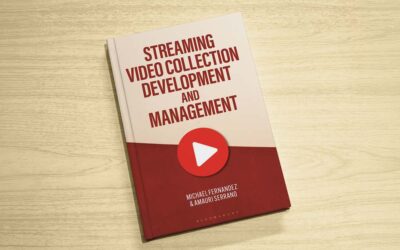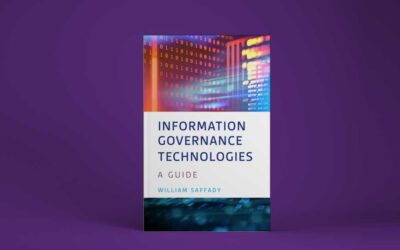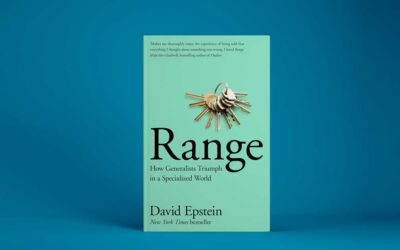Artificial Intelligence (AI) – An Important Tool for Special Librarians

Ron Aspe
It used to be that everything a special library’s clients needed to know was available ‘in the stacks’—and it was therefore a reasonable assumption that if it was shelved, it should be easily retrievable. Today’s flood of digital content makes it difficult for many libraries to meet the ‘all access’ expectation.
Separating the wheat from the chaff
Remember the days of ‘weeding’ the collection? Periodically, library staff would decide what was needed and what could be discarded. This was done to manage storage costs and physical workloads. An interesting by-product of this process was that it also ensured the overall relevancy of the library’s collection.
With digital content, the drivers of storage cost and physical workloads no longer apply. As digital resources ‘age out’, they can clutter up your library’s knowledge base. Compounding this problem is the reality that it costs more for a librarian to weed a digital resource than it does to just ignore it; yet ignoring it causes a reduction in digital content’s relevance over time.
AI could be used to help weed a digital collection by automatically deleting content within certain parameters. More useful, however, is teaching your AI search engines to ignore content that is less relevant. With that approach, if someone can’t find what they’re looking for, they can still access the expertise of the library staff to help them find what they need.
Frankly, I’m not sure we are ready for a machine to decide what to keep and what to delete—even Microsoft doesn’t go that far! Then again, perhaps we should offer a ‘deleted items’ archive and ask users if they want to search that too?
Do you need to dam the flood?
If you take away physical limits, it’s a reasonable expectation that a library system (ILS) should be able to store everything. Most end users have no appreciation for the need to curate the collection, so hiring extra staff to do so is a tough sell. On the other hand, while storing everything and offering what’s current is a big challenge, it is a great opportunity to expand the scope and influence of the library.
So, if everything could go into your ‘virtual library’, how do you decide what shouldn’t? Maybe, it’s better not to restrict what goes in, but instead use AI to make the process of adding content to the collection less time consuming—while preventing your collection from becoming a ‘junk drawer’ that people rummage around in to find a rubber band to tie their thoughts together.
AI can also quickly review almost any piece of content and tease out important metadata such as possible subjects and match them against your library system’s taxonomy or thesaurus. Supervised by a human operator, AI can dramatically increase throughput. Furthermore, AI can actually learn from the process of having humans correct its errors. AI might never be 100% accurate, but would definitely be better than having nothing in the drawer. And, if you flag which items were machine cataloged, your search engine can be taught to offer these as supplementary, rather than primary resources.
The more things change…
Having been in the library automation industry for 3 decades, we’ve seen a lot of change. Early versions of our software were capable of printing catalog cards! Before long, those same catalogs could be searched online using our software, via the library’s computer(s). Then, there were wide area networks—and then the internet. People were then able to get their information from any digital device, which represented significant change.
Here’s a bit of irony and also a possible indicator of our future. Recently, in response to our clients’ needs, we introduced a Request Tracking and Management function to help manage reference requests. Apparently, the volume of requests our clients handle has increased, rather than decreased. Probably because of the flood which shows no signs of receding.

Ron Aspe
Stan writes regularly for Lucidea’s Think Clearly blog. Subscribe to ensure you never miss a post with engaging information for KM practitioners and special librarians! Learn about Lucidea’s Presto, SydneyDigital, and GeniePlus software with unrivaled KM capabilities that enable successful knowledge curation and sharing.
Similar Posts
Interview with an Author: Fernandez on Streaming Video Collection Development
As demand for streaming video in libraries grows, so do the challenges of managing access, budgets, and licensing. Co-author Michael Fernandez shares key insights from his book, “Streaming Video Collection Development and Management”.
Interview with the Author: Saffady on Information Governance Technologies
Technology is at the heart of modern information governance, shaping how organizations manage records and ensure compliance. In this interview, expert William Saffady shares insights on the essential technologies driving the field and what information professionals need to know.
Reflections on David Epstein’s Range: How Generalists Triumph in a Specialized World
Lauren Hays explores “Range: How Generalists Triumph in a Specialized World” through a librarian’s lens, reflecting on the role of broad knowledge in critical thinking and problem-solving.
Interview with the Editor: Bobbi L. Newman on Well-Being in the Library Workplace
Enjoy Lauren Hays’ interview with Bobbi L. Newman on why workplace well-being matters, how managers can drive meaningful change, and what steps libraries can take to create a culture of trust and support.



